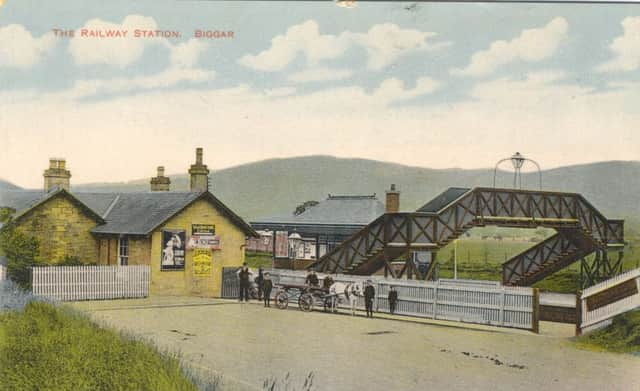After 149 years - a new history book on Clydesdale


A lot has happened since that book was written in 1867 and so a more modern take on our area’s heritage was long, long overdue.
This week, after 18 months of exhaustive research and exhausting work, Lanark and District Archaeological Society (LADAS) has updated our glorious, varied past with the publication of Historic Clydesdale Parish by Parish.
Advertisement
Hide AdAdvertisement
Hide AdThe 248 glossy pages are packed with photographs and facts on each of these 20 highly diverse parishes, taking the reader on a magical history tour of every square inch of Clydesdale’s 510 square mile territory.
Made possible by generous grants from, mainly, Lanark’s Border Biscuits and the Heritage Lottery Fund, this is truly a team effort with one writer taking on each parish to create the overall picture.
We start off in Abington with details on buildings as far apart in hisory as the 12th century Kirkton Church to the post-war Glengonnar Camp,
The Auchengray section details its once prominent brickworks and the Auchenheath chapter includes views of its still-impressive Auchenheath House.
Advertisement
Hide AdAdvertisement
Hide AdOf course, Biggar’s history would merit its own book but here we have a fine summary of the burgh’s major events.
The once-breathtaking Blackwood House features prominently in that parish’s section along with a colour view of its impressive gardens. Braehead’s past major industry of lime production is covered while Braidwood’s main landmark of Halbar Tower is illustrated.
There is an understandably large section on Carluke, our most populous parish and the long-lost Carmichael House features in that parish’s chapter; a 1920’s view of Carnwath Old Jail and Mercat Cross is a highluight of its section while Carstairs and Carstairs Junction’s railway connections are celebrated.
The farming history and beautiful scenery of Cartland, Cleghorn and the Clyde Valley are well covered and Coalburn’s Roman origins revealed as is Coulter’s ancient Cow Castle in an aerial photo.
Advertisement
Hide AdAdvertisement
Hide AdCovington’s connection to Robert Burns is featured as is Crawford and Crawfordjohn’s past roles as cross-border staging posts.
The Dolphinton chapter includes a view of its long-lost railway station while Douglas Castle is featured in the next section; the surprisingly diverse history of Dunsyre is detailed and the political past of Forth makes fascinating reading.
Kirkmuirhill’s strong co-operative ties are celebrated and Lamington’s Holy Trinity Church’s original designs revealed.
Lanark’s story takes up more than 30 pages and Law isn’t ignored, the emphasis being on its coalmining past as is the lead mining past of Leadhills.
Advertisement
Hide AdAdvertisement
Hide AdLesmahagow’s ancient religious roots are detailed and Lamington’s once grand Oggscastle illustrated.
Quothquan, Roberton, Symington, Wiston, Thankerton and Nemphlar’s wealth of historic buildings are celebrated as is New Lanark’s. Small but historically interesting communities like Newbigging, Pettinain and Ponfeigh aren’t forgotten.
Historic Clydesdale Parish by Parish is published by Stenlake and costs just £10 via the Alvo shop on Lanark’s Bloomgate.